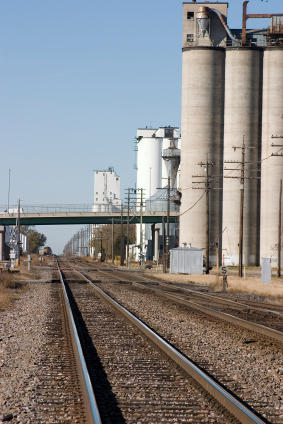
By Delore Zimmerman and Matthew Leiphon
Infrastructure investment in America is poised to jump to the front of the policy agenda over the next few years. With the election of the next President, new priorities and objectives are sure to be set on several key issues, including national infrastructure investment. Some of this will be addressed in a major new Congressional transportation funding that will include a major push for all kinds of infrastructure.
Infrastructure is one of the fundamental building blocks of economic opportunity, something increasingly recognized by pundits as well as political leaders in both parties. At NewGeography.com we hope to expand the discussion about infrastructure policy by examining its role in our communities, and exploring innovative new funding options for its provision.
We have already looked at the history of infrastructure investment by focusing on the accomplishments of the New Deal. In the next few weeks we will examine current and future trends in infrastructure investment, both here and around the globe, and the fundamental role that infrastructure plays in promoting economic growth and driving innovation.
Unlike earlier periods of infrastructure expansion, which were often uniformly national or regional in scope, today’s infrastructure needs related to economic development are often closely tied to the specific circumstances, resources, capabilities, and aspirations of the local economy. And, because federal resources alone will most certainly be unable to meet skyrocketing needs, local and private resources be mobilized to the greatest extent possible.
One major initiative we are developing deals with the role of infrastructure in America’s Heartland, an often-overlooked, perhaps insufficiently understood part of our country’s economic landscape. Today’s Heartland is made up of thousands of rural small towns and hundreds of second and third tier cities scattered across America. They have deep roots in agriculture, forestry, mining or fishing but many have made a steady and successful diversification transition to an economy that now includes strong, globally competitive manufacturing, energy or service industries.
Heartland communities outside the major metropolitan areas possess many underutilized assets. These include relatively low housing costs and a good business climate, quality schools, a reasonably educated and productive workforce, and available land and other resources for expansion.
More recently the resurgence of the Heartland can be traced to strong performance in traditional pillars of small town and rural economies ‐‐ food and energy. But as history shows, resource-based markets are often subject to the whims of global cycles that can rise and fall with little warning. The Financial Times recently noted the biggest drop in commodity prices in over 25 years, although from record highs. But the drop does point to the volatility of these markets and the risk of over-reliance on high prices in crops and livestock to keep the Heartland economies robust and growing.
To avoid a return to what may be seen as the “commodity trap”, there needs to be a commitment to infrastructure that could help grow other sectors of the economy as well as best leverage the commodity-based economy. This includes standard infrastructure such as highways, airports, harbors, utility distribution systems, railways, water and sewer systems, and communications networks. New facilities to distribute energy resources to the rest of the country—including pipelines to supply the water necessary to propel both energy production and manufacturing—will also be needed.
But we also see the need to pay attention to specialized infrastructure such as university and lab facilities, technology and training centers, multi-modal shipping facilities, and research parks. These infrasystems – integrated fusions of facilities, technology and advanced socio-technical capabilities – have emerged as key drivers of innovation and the locus of future higher-value industries and higher-paying jobs.
Federal resources will probably not be available meet these needs, as a 2006 GAO concluded For that reason, here and elsewhere around the world, cash-strapped governments are viewing private investment as an increasingly important piece of the infrastructure investment puzzle. Concurrently, banks, pension funds and other private investors are considering infrastructure as a new, long-term asset class that offers a combination of hard assets and visible long-term earning streams.
This confluence of circumstances has given rise to a new set of private infrastructure funds that have attracted billions of dollars and Euros from individual and institutional investors alike, beyond traditional equity investment, public utility bond issues and into outright privatization of assets.
The key question is will the new private infrastructure investment vehicles will find their way to the Heartland or remain concentrated in the large metro areas like their venture capital counterparts. Communities and second and third tier cities are, after all, often financially stressed because of a limited tax base, the high costs associated with size and scale, and difficulties adjusting expediently to population growth or decline.
A possible solution lies in creating a Heartland Infrastructure Investment Bank. This institution would focus solely on infrasystem investments that would create higher-value opportunities in science and technology, manufacturing, energy and advanced services in smaller commuters. The Bank is to serve as a lead or secondary lender on projects of economic significance in the American Heartland and is intended to leverage considerable co-investment from the private and public sectors.
We first developed the concept of a development bank while working on a project for the Washington, DC-based New America Foundation. Now we are looking for practical advice from potential investors, communities and policy makers. Please help us build a better future for the American heartland.
Delore Zimmerman is President of Praxis Strategy Group and publisher of NewGeography.com Matthew Leiphon is a Research Analysis at Praxis Strategy Group












